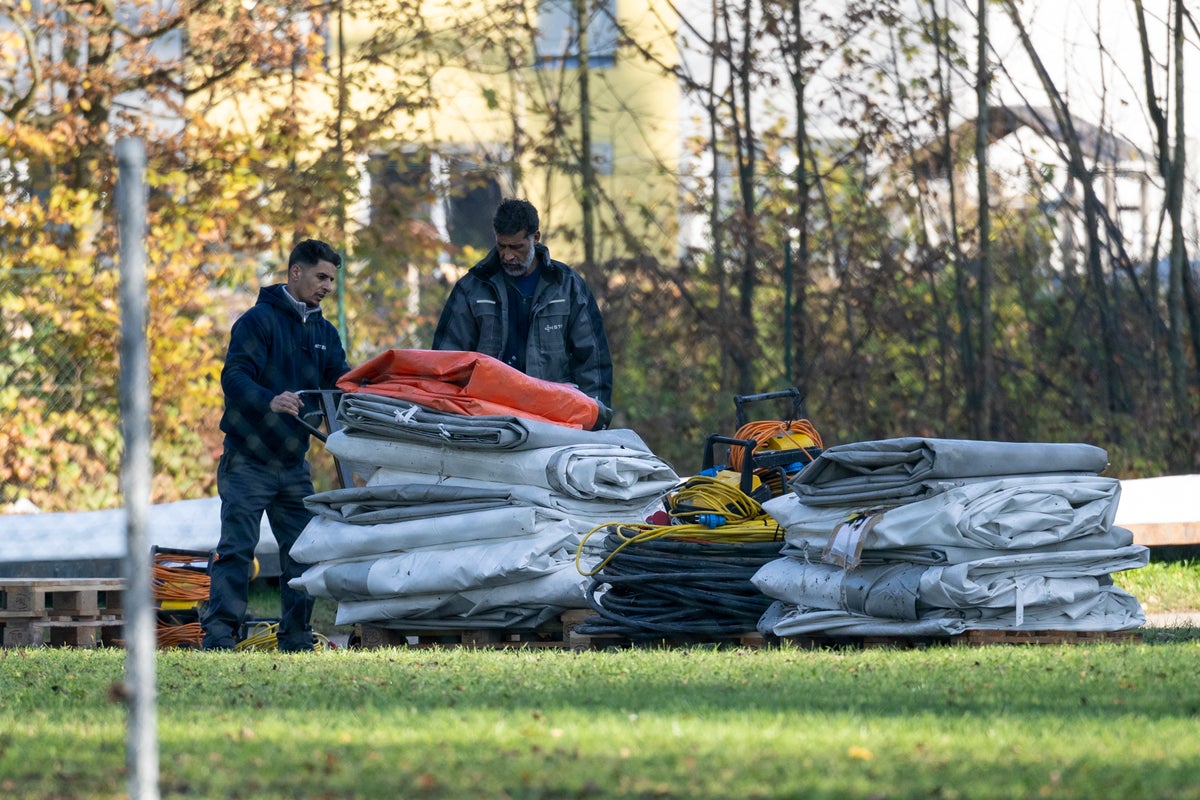
In a standoff over the rising number of asylum-seekers in Austria, the mayor of a small village has defied the federal government and ordered tents housing the migrants to be dismantled.
After a weeks-long conflict, St. Georgen Mayor Ferdinand Aigner had more than a dozen tents removed that were set up in his village last month. Workers started taking down the 17 white tents Monday after the mayor ruled they were unsafe, “inhumane” and wouldn’t survive the next storm.
“It’s very clear, this method of just putting up tents — I’m still convinced it’s the most stupid solution — putting up these tents in municipalities which are already doing enough — I won't allow that,” Aigner told The Associated Press. He claimed some residents were feeling threatened by the presence of asylum-seekers, many of whom are young men.
The Austrian government has repeatedly criticized the village's resistance toward housing asylum-seekers in tents, saying that most Austrian regions, including the state of Upper Austria where St. Georgen is based, did not fulfill their required quotas of taking in asylum-seekers.
Across Europe, the number of people applying for international protection has reached highs not seen since well over 1 million people sought refuge on the continent seven years ago. That has placed strains on national asylum systems, especially when it comes to housing.
In Germany, officials in Berlin have turned a former airport into a temporary refugee shelter for up to 3,600 migrants as regular shelters became overcrowded.
In Austria, even the U.N. refugee agency got involved, urging the federal government and St. Georgen to find a compromise so the migrants will not end up homeless during the winter cold.
“Despite all the challenges Austria is currently facing due to the high number of asylum applications, it would be a concession of failure for Austria if people, many of whom had to flee war and terror, were to end up on the streets," said Christoph Pinter, the head of UNHCR Austria.
The UNHCR noted that many communities in Austria have already taken in people seeking protection, and that only about 5,000 more places were needed.
“If every municipality would take a heart and create a few places, the problem would quickly be solved,” Pinter said.
However, Aigner doesn't see it this way.
“It’s just too many,” he said, referring to the number of the asylum-seekers his village is supposed to shelter.
Austria's Interior Minister Gerhard Karner said the tents make young asylum-seekers less threatening, not more.
“Our task is to prevent young men who have practically no chance of asylum from sitting around in front of schools, in front of kindergartens, in our main squares, in village squares, in train stations," Karner said, according to Austrian daily Der Standard.
It was not immediately clear how Austria's federal government would react to the dismantling of the tents, but as of late Monday, the interior ministry had not filed an appeal in court to keep the tents in place. The more than 100 asylum-seekers living in the tents were distributed to other shelters.
More than 70,000 people applied for asylum in Austria between January and September. In comparison, only around 40,000 people applied for asylum in all of 2021.
Austria is also hosting more than 85,000 Ukrainian refugees who have fled Russia's brutal war.
Many recent asylum-seekers come from countries like India, Syria, Afghanistan or from northern Africa but most do not intend to stay in Austria. Often these migrants, who have been trekking up the Balkan route, pay human traffickers thousands of euros (dollars) trying to reach countries like Germany, Spain or Italy in hopes of finding work.
Since they are legally not allowed to pass through Austria, they apply for asylum if they get detained to avoid immediate deportation. Often they continue their journey west after a couple of days in the Austrian asylum system, seeking to reach their desired destinations.
According to the UNHCR, this means that despite rising asylum numbers, the actual number of asylum applicants in Austria is “only just about the level of last year."
A young asylum-seeker from Somalia, interviewed Monday in St. Georgen, said he was getting increasingly desperate about his situation.
“I don’t know how I can live in Europe,” 27-year-old Bashir Hassan Jabart said. “Everywhere you go, they return you back.”
___
Kirsten Grieshaber reported from Berlin.







